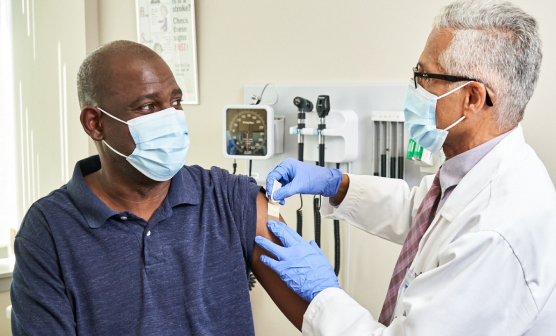COVID-19 (Coronavirus)
What you need to know about the disease and how your health is our top priority.
COVID-19 vaccines are safe, effective and free for everyone
FEP covers all COVID-19 vaccines authorized by the FDA, with no cost sharing for our members. You will pay no out-of-pocket costs or unexpected fees for the recommended doses when you receive the vaccines from Preferred providers.

When and where to get vaccinated
You can use the national VaccineFinder to check availability and search for vaccine locations in your area. You can also text your ZIP code to 438829 or call 1-800-232-0233 to find a location. The VaccineFinder creators have worked with clinics, pharmacies, and health departments to provide accurate and up-to-date information about vaccination services. Remember to make sure these locations are in-network to ensure you have no out-of-pocket costs when you receive your vaccines.
You can search FEP’s vaccine network to find a Preferred retail pharmacy near you.
Find COVID-19 Vaccines
Your cost share for these services
Telehealth services provided by Teladoc Health®
FEP covers all of your telehealth visits from Teladoc Health at no out-of-pocket cost to you.
Over-the-counter COVID-19 tests
FEP will continue to reimburse members for the purchase of OTC tests.
FEP will cover up to eight (8) over-the-counter COVID-19 tests per member on a contract per calendar month.
COVID-19 diagnostic tests and treatments
You are responsible for paying the member cost share for diagnostic tests or treatment that are medically necessary and consistent with CDC guidance if diagnosed with COVID-19. You can review diagnostic out-of-pocket costs in the benefits brochures. You may use your MyBlue® Wellness Card to pay for these if you choose.
Precertification and prior approval will be required as stated in the FEP Blue Standard and FEP Blue Basic brochure and the FEP Blue Focus brochure.
Get health advice and quality care
If you have a question about your health or need to seek treatment, we offer a range of care options.
Have a question about any symptoms or if you should seek care? Call our 24/7 Nurse Line at 1-888-258-3432 to speak to a registered nurse.
There’s an easy way to get care anytime, anywhere. For members who aren’t feeling well, our telehealth services allow you to connect with a board-certified doctor by web, phone or mobile app.
General health services provided by Teladoc are available to U.S.-based members traveling or temporarily living abroad. Members with a U.S. address can now be treated globally for minor injuries, illnesses and non-emergency health issues.
FEP Blue Focus and FEP Blue Basic members must see in-network (Preferred) providers for care. FEP Blue Standard members can see both in-network (Preferred) and out-of-network providers; however, out-of-pocket costs for out-of-network providers may be higher.